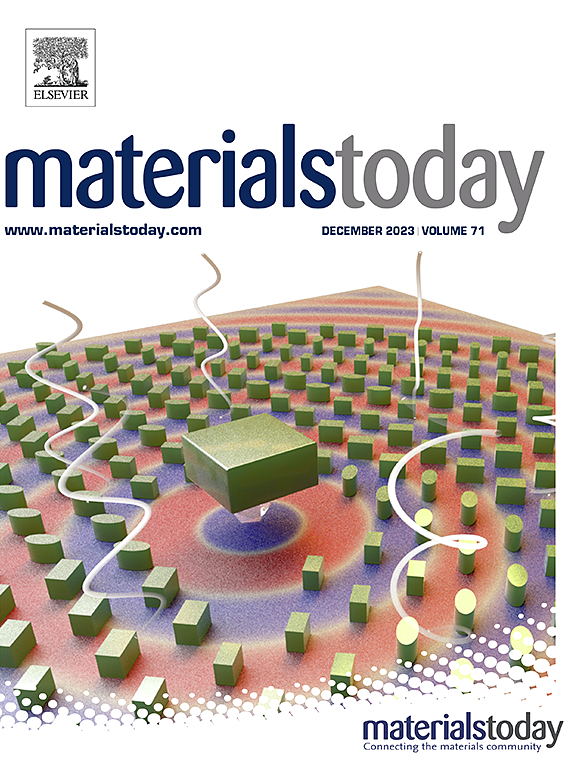A multifunctional additive extending the calendar life of Ni-rich cathode-based lithium-ion batteries for electric vehicles
IF 21.1
1区 材料科学
Q1 MATERIALS SCIENCE, MULTIDISCIPLINARY
引用次数: 0
Abstract
Lithium-ion batteries (LIBs) with Ni-rich cathode are expected to conquer range anxiety for electric vehicles (EVs). However, they suffer from rapid performance fading under inadequate thermal management, particularly during EV applications in summer, due to vigorous parasitic reactions between the Ni-rich materials and the electrolyte and consequent chemical crosstalk at elevated temperature. To address the challenge, a triple-functional additive named triallyl cyanurate (TAC) is proposed in this study, and the mechanism of its function is validated theoretically and experimentally. In detail, TAC builds strong solid electrolyte interphase (SEI) through reduction to protect the anode, forms robust cathode electrolyte interphase (CEI) via oxidation decomposition due to preferable adsorption to restrain the parasitic reactions between the cathode and the electrolyte, and inhibits LiPF6 hydrolysis to remove HF to lower the corrosivity of the electrolyte. Encouragingly, the TAC-containing electrolyte significantly extends the cycle life of Ah-level pouch cells with various Ni-rich cathodes by 2.5 times at room temperature and 45 °C, as well as extending the high-temperature storage capability by up to 2.8 times. The successful exploration of functional TAC as electrolyte additive presents a promising multi-in-one strategy for additive design, paving a new avenue to boost the application of Ni-rich cathode in LIBs.

一种延长电动汽车用富镍阴极锂离子电池日历寿命的多功能添加剂
具有富镍阴极的锂离子电池有望克服电动汽车的续航里程焦虑。然而,在不适当的热管理下,特别是在夏季的电动汽车应用中,由于富镍材料与电解质之间的剧烈寄生反应以及随之而来的高温下的化学串扰,它们的性能会迅速衰退。为了解决这一难题,本研究提出了一种名为三烯丙基氰尿酸酯(TAC)的三功能添加剂,并对其作用机理进行了理论和实验验证。TAC通过还原形成坚固的固体电解质界面相(SEI)来保护阳极,通过氧化分解形成坚固的阴极电解质界面相(CEI),由于良好的吸附,抑制阴极与电解质之间的寄生反应,抑制LiPF6水解去除HF,降低电解质的腐蚀性。令人鼓舞的是,含有tac的电解质在室温和45℃下显著延长了具有各种富镍阴极的ah级袋状电池的循环寿命2.5倍,并将高温存储能力延长了2.8倍。功能TAC作为电解质添加剂的成功探索,为添加剂设计提供了一种很有前途的多合一策略,为推动富镍阴极在锂离子电池中的应用开辟了新的途径。
本文章由计算机程序翻译,如有差异,请以英文原文为准。
求助全文
约1分钟内获得全文
求助全文
来源期刊

Materials Today
工程技术-材料科学:综合
CiteScore
36.30
自引率
1.20%
发文量
237
审稿时长
23 days
期刊介绍:
Materials Today is the leading journal in the Materials Today family, focusing on the latest and most impactful work in the materials science community. With a reputation for excellence in news and reviews, the journal has now expanded its coverage to include original research and aims to be at the forefront of the field.
We welcome comprehensive articles, short communications, and review articles from established leaders in the rapidly evolving fields of materials science and related disciplines. We strive to provide authors with rigorous peer review, fast publication, and maximum exposure for their work. While we only accept the most significant manuscripts, our speedy evaluation process ensures that there are no unnecessary publication delays.
 求助内容:
求助内容: 应助结果提醒方式:
应助结果提醒方式:


